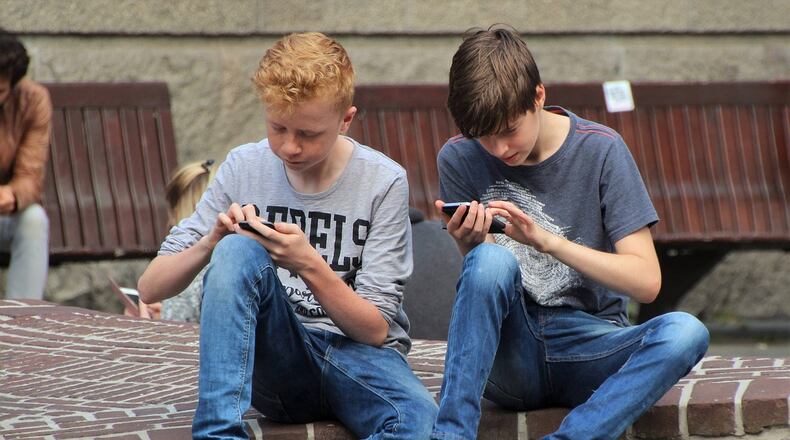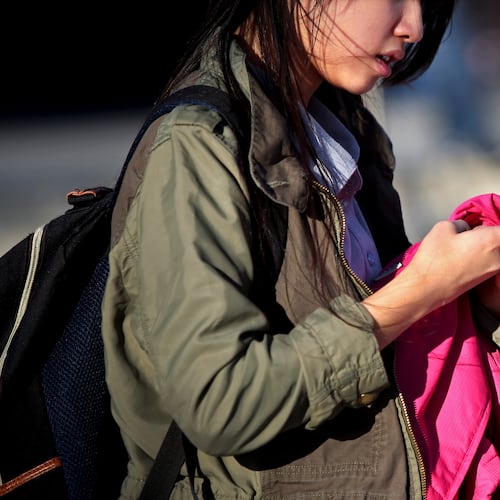When Marietta City Schools Superintendent Grant Rivera explained how enforcement of the middle schools’ no-phone policy will work this fall, he said the policy depends on the consistency of adults to uphold it.
“We have to be fair and firm but consistent with kids around what this means,” said Rivera, “and we have to make sure that everything else in the district, everything else in the school, is aligned.”
Let’s hope parents are also aligned with Marietta’s vision of phone-free learning environments.
Marietta will require middle school students to lock their phones in special pouches that will not be unlocked until the final five minutes of the day.
Kids will contest this new rule, and schools will need parent cooperation, just as they do to counter chronic absenteeism or any other worrying student behavior. Without parents on their side, schools have a harder time turning reluctant readers into book lovers, prodding picky eaters to try carrots over french fries or persuading teens to stay away from binge drinking.
The mounting evidence that phones undermine children’s concentration and mental health ought to have all parents applauding school bans. And we are starting to see parent-led movements like Wait Until 8th that recommend delaying smartphones until the end of middle school.
Yet, despite all the attention to the downsides of smartphones, parents give phones to their children long before high school. Common Sense Media found 71% of 12-year-olds in the United States now have phones. In a National Consumers League survey, the main reasons parents get phones for children aged 8 to 12 are safety, 84%; tracking after-school activities, 73%; and because a child asked for one, 16%.
Early smartphone access has created a generation of children tethered to screens by the hundreds of notifications that beckon them each day. U.S. Surgeon General Dr. Vivek Murthy now wants a warning label on social media platforms advising parents that use of the platforms could endanger adolescents’ mental health.
“The mental health crisis among young people is an emergency — and social media has emerged as an important contributor,” wrote Murthy in a column in The New York Times. “Adolescents who spend more than three hours a day on social media face double the risk of anxiety and depression symptoms, and the average daily use in this age group, as of the summer of 2023, was 4.8 hours.”
All that time staring at their phones cuts down on children talking in person, playing outside and paying attention in school. This is not unique to America. The latest results of the Program for International Student Assessment or PISA found students worldwide who use smartphones at school were more susceptible to losing focus in class and falling behind.
The PISA findings underscore why the new phone policy planned by Marietta City Schools and elsewhere in Georgia is vital. Expecting teachers to police phones in classrooms doesn’t work anywhere, according to PISA. In Midtown High’s recent news that it, too, will lock student phones in pouches this year, the principal cited the burden on the teaching and administrative staff of the Atlanta school.
The school board of the Los Angeles Unified School District, the nation’s second-largest school district, approved a phone ban a week ago. Among the educators endorsing the ban was middle school English teacher Malinda Marcus, who told the board, “My students will resort to any means necessary to sneak a peek at their phones during class.”
With phones proving irresistible to students, PISA found the only effective policy across countries was keeping the devices out of classrooms.
During the livestreamed Los Angeles school board meeting, high school math teacher Jessica Quindel told the board she returned to the classroom after 13 years and encountered mostly familiar challenges.
Except one.
“The new challenge was the widespread addiction to smartphones,” she said. While students had phones in 2010, it was controllable. Now, Quindel said, “Even with a strict no-cellphone policy, it was an uphill battle. Managing student use of smartphones is now like running a nonstop marathon.”
About the Author
Keep Reading
The Latest
Featured



